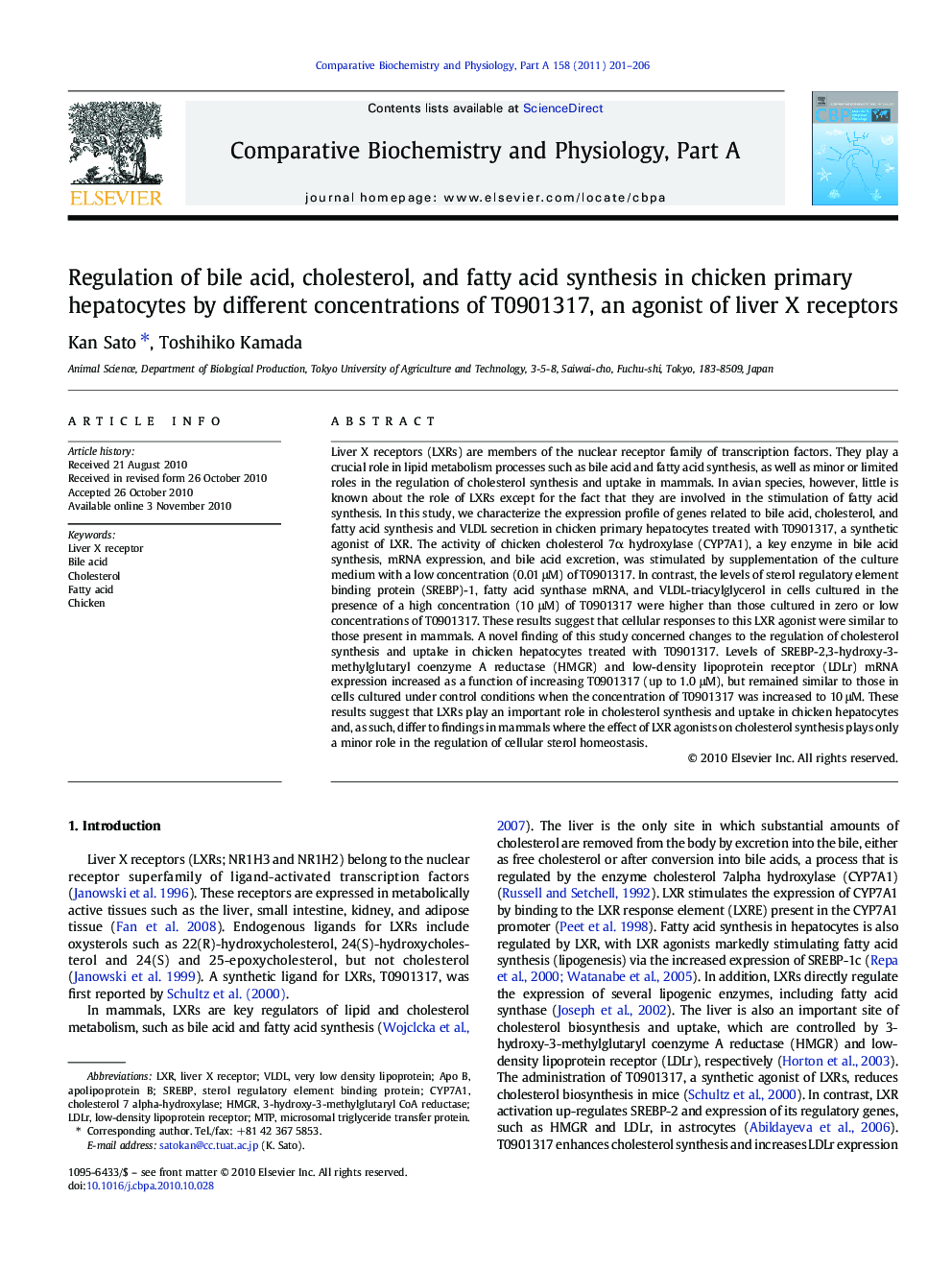| Article ID | Journal | Published Year | Pages | File Type |
|---|---|---|---|---|
| 1972835 | Comparative Biochemistry and Physiology Part A: Molecular & Integrative Physiology | 2011 | 6 Pages |
Liver X receptors (LXRs) are members of the nuclear receptor family of transcription factors. They play a crucial role in lipid metabolism processes such as bile acid and fatty acid synthesis, as well as minor or limited roles in the regulation of cholesterol synthesis and uptake in mammals. In avian species, however, little is known about the role of LXRs except for the fact that they are involved in the stimulation of fatty acid synthesis. In this study, we characterize the expression profile of genes related to bile acid, cholesterol, and fatty acid synthesis and VLDL secretion in chicken primary hepatocytes treated with T0901317, a synthetic agonist of LXR. The activity of chicken cholesterol 7α hydroxylase (CYP7A1), a key enzyme in bile acid synthesis, mRNA expression, and bile acid excretion, was stimulated by supplementation of the culture medium with a low concentration (0.01 μM) of T0901317. In contrast, the levels of sterol regulatory element binding protein (SREBP)-1, fatty acid synthase mRNA, and VLDL-triacylglycerol in cells cultured in the presence of a high concentration (10 μM) of T0901317 were higher than those cultured in zero or low concentrations of T0901317. These results suggest that cellular responses to this LXR agonist were similar to those present in mammals. A novel finding of this study concerned changes to the regulation of cholesterol synthesis and uptake in chicken hepatocytes treated with T0901317. Levels of SREBP-2,3-hydroxy-3-methylglutaryl coenzyme A reductase (HMGR) and low-density lipoprotein receptor (LDLr) mRNA expression increased as a function of increasing T0901317 (up to 1.0 μM), but remained similar to those in cells cultured under control conditions when the concentration of T0901317 was increased to 10 μM. These results suggest that LXRs play an important role in cholesterol synthesis and uptake in chicken hepatocytes and, as such, differ to findings in mammals where the effect of LXR agonists on cholesterol synthesis plays only a minor role in the regulation of cellular sterol homeostasis.
